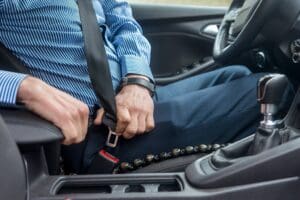
Seat Belt Laws and Enhanced Safety Enforcement
Seat belts are arguably the most protective safety measure a person can take to avoid serious injury or death when involved in a motor vehicle crash. The simple use of a safety restraint cuts the risk of death and significant injury for drivers and other front-seat passengers by nearly 50%, and rear-seat occupants by upwards of 25%. Proper car safety seat use has led to a 60% reduction in deaths in the last fifty years. Equipping new motor vehicles with seat belts has been a requirement in the U.S. since 1968. Sixteen years later, the first mandatory seat belt law was passed in New York State. Since then, seat belt usage rates have steadily increased. In the early 1990’s, the

